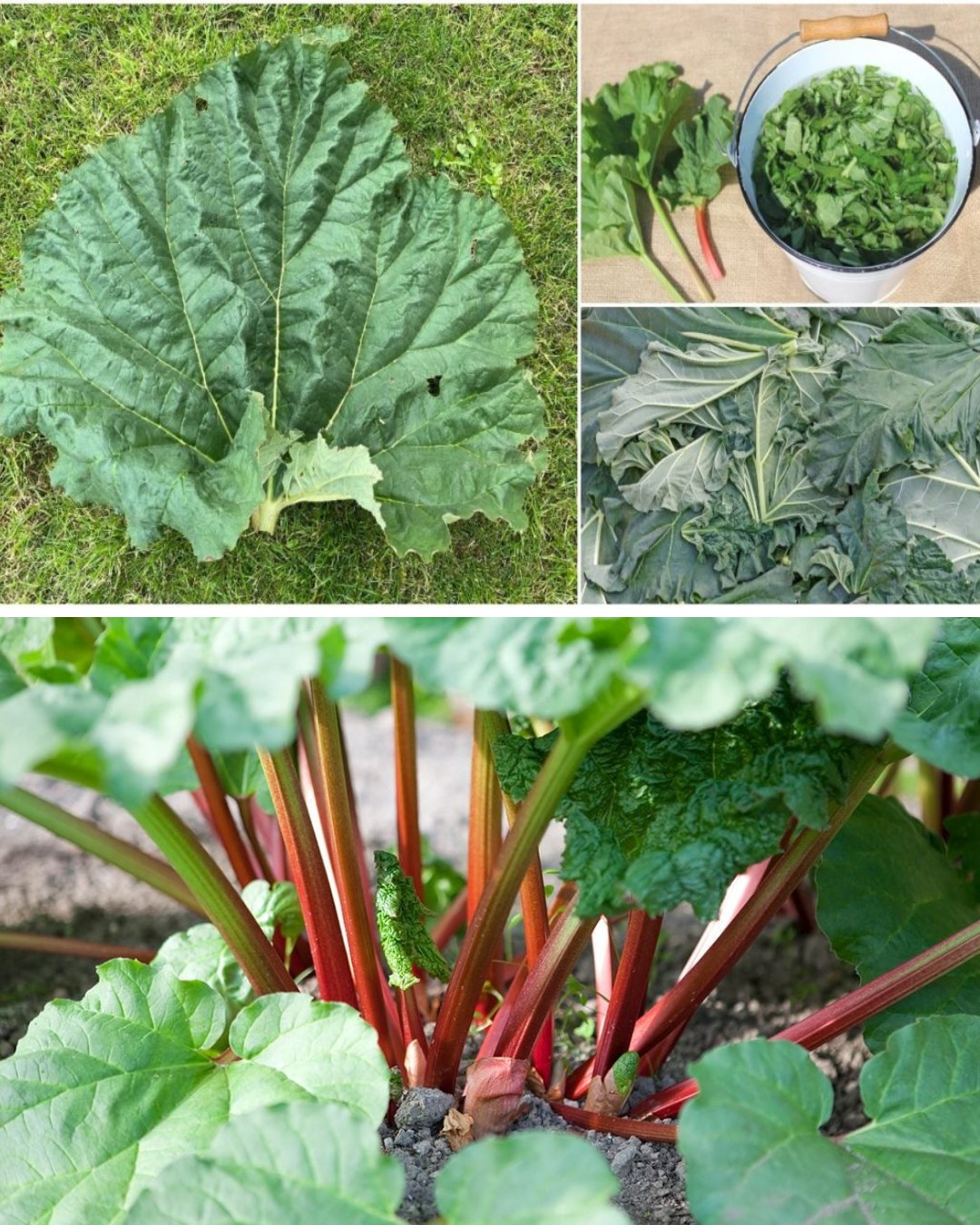6 Ways to Use Rhubarb Leaves Around the Home or Garden
Rhubarb, known for its tart stalks, often leaves its large, inedible leaves overlooked. However, these leaves can serve various purposes around the home and garden. Here’s a look at how you can harness the potential of rhubarb leaves in safe and resourceful ways.

- Organic Pest Repellent
Transform rhubarb leaves into a natural pest deterrent, particularly effective against aphids and cabbage worms.
Steps:
- Boil Leaves: Simmer rhubarb leaves in water for 20 minutes.
- Cool and Strain: Let the mixture cool, then strain the liquid.
- Dilute and Spray: Dilute with water (1:3 ratio) and use as a spray on affected plants.
- Compost Accelerator
Utilize the high nitrogen content of rhubarb leaves to speed up compost decomposition.
Steps:
- Chop Leaves: Cut leaves into smaller pieces.
- Mix with Compost: Add to compost bin, balancing with carbon-rich materials.
- Weed Control Mulch
Employ rhubarb leaves as biodegradable mulch to suppress weed growth.
Steps:
- Spread Leaves: Place whole or chopped leaves around plants.
- Water: Ensure leaves are watered to aid breakdown and weed suppression.
- Pot and Pan Cleaner
Harness the acidic properties of rhubarb leaves to clean stubborn residue from cookware.
Steps:
- Boil Leaves in Pot: Boil leaves in water.
- Scrub: Use the mixture to scrub pots and pans.
- Natural Dye
Extract natural dye from rhubarb leaves for fabric or craft projects.
Steps:
- Boil Leaves: Simmer leaves in water to extract dye.
- Strain and Use: Strain liquid and apply as dye.
- Soil Health Indicator
Observe rhubarb leaf decomposition rate to gauge soil health.
Steps:
- Observe Decomposition: Place a leaf in soil and monitor breakdown rate.
Safety Precautions
Exercise caution when handling rhubarb leaves due to their oxalic acid content, which can be toxic if ingested. Always wear gloves and avoid uses where ingestion is possible.
Rhubarb leaves, often overlooked, offer a range of eco-friendly solutions for home and garden. From pest control to natural dye, these versatile leaves can enhance sustainability in everyday life. Handle with care and explore the myriad uses of rhubarb leaves to enrich your gardening and household endeavors.
